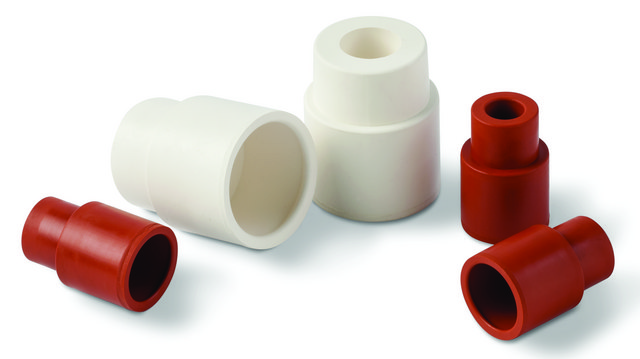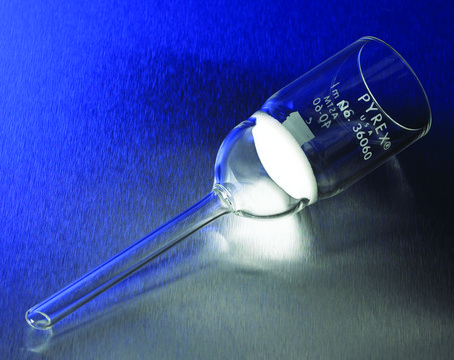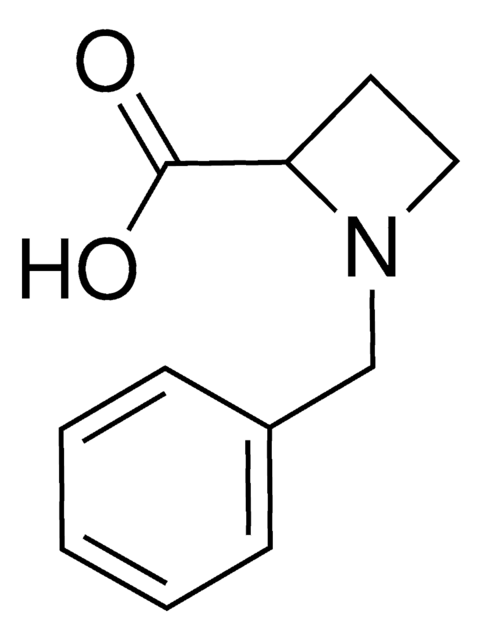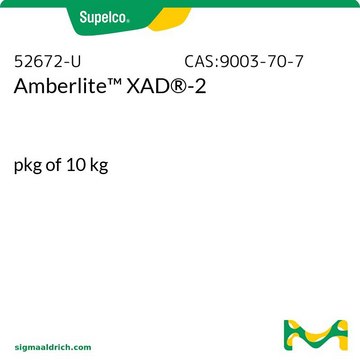20275
Amberlite™ XAD®-2
pkg of 100 g
Select a Size
Select a Size
About This Item
Recommended Products
Agency
suitable for ASTM® D4861
suitable for EPA Method 10A, Method 23 and OTM-45
form
solid
packaging
pkg of 100 g
technique(s)
HPLC: suitable
LPLC: suitable
surface area
~300 m2/g
matrix
styrene-divinylbenzene (macroreticular)
matrix active group
polymer
particle size
20-60 mesh
pore size
~0.65 mL/g pore volume
90 Å mean pore size
density
1.02 g/mL at 25 °C (true wet)(lit.)
1.08 g/mL at 25 °C (skeletal)(lit.)
Looking for similar products? Visit Product Comparison Guide
Related Categories
1 of 4
This Item | 10357 | SU853005 | 52672-U |
|---|---|---|---|
| matrix styrene-divinylbenzene (macroreticular) | matrix styrene-divinylbenzene (macroreticular) | matrix styrene-divinylbenzene (macroreticular) | matrix styrene-divinylbenzene (macroreticular) |
| pore size ~0.65 mL/g pore volume, 90 Å mean pore size | pore size ~0.65 mL/g pore volume, 90 Å mean pore size | pore size ~0.65 mL/g pore volume, 90 Å mean pore size | pore size ~0.65 mL/g pore volume, 90 Å mean pore size |
| matrix active group polymer | matrix active group polymer | matrix active group polymer | matrix active group polymer |
| particle size 20-60 mesh | particle size 20-60 mesh | particle size 20-60 mesh | particle size 20-60 mesh |
| separation technique reversed phase | separation technique reversed phase | separation technique reversed phase | separation technique reversed phase |
| technique(s) HPLC: suitable, LPLC: suitable | technique(s) HPLC: suitable, LPLC: suitable | technique(s) LPLC: suitable, solid phase extraction (SPE): suitable | technique(s) HPLC: suitable, LPLC: suitable |
General description
Specifications:
Application
- Amberlite™ XAD®-2 was used as adsorbent in the extraction of organochlorine compounds using Soxhlat extraction technique.[3]
- Amberlite™ XAD®-2 was used as adsorbent in the extraction of honey samples using column chromatography for HPLC analysis.[4]
- Amberlite™ XAD®-2 was used in adsorption chromatography.[5]
Legal Information
Storage Class Code
11 - Combustible Solids
WGK
WGK 3
Flash Point(F)
Not applicable
Flash Point(C)
Not applicable
Personal Protective Equipment
Choose from one of the most recent versions:
Already Own This Product?
Find documentation for the products that you have recently purchased in the Document Library.
Our team of scientists has experience in all areas of research including Life Science, Material Science, Chemical Synthesis, Chromatography, Analytical and many others.
Contact Technical Service











